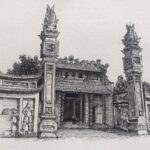Participating in the “6th Cultural Development and Elegant and Civilized Hanoian Building Press Awards 2023” competition, the team of authors including Tran Hong Van, Hoang Le Quyen, Doan Anh Tuan, and Nguyen Huu Tiep from Hanoimoi newspaper remarkably secured the A prize with their work “Rural Architecture: What Lies Ahead in the Future?” for five consecutive parts. The Hanoi Department of Culture and Sports’ Electronic Information Portal is honored to introduce the first part of this piece to our extensive readership!
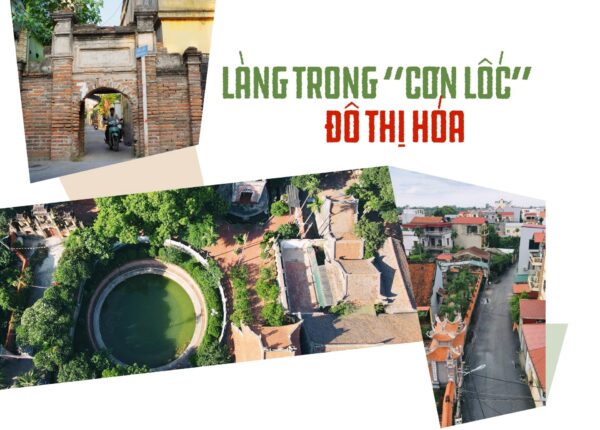
Under the scorching July sun, the heat is palpable. Traveling on the newly developed rural roads in the suburban districts of Hanoi, one can easily sense the progress and change. Straight concrete roads, closely packed houses, air conditioning units crowding the roofs, humming loudly… The “purely ancient” rural essence can only be recognized through the remaining “signs” like village gates, banyan trees, wells, and communal house roofs.

We visited Dong Anh, one of the ancient lands rich in historical, cultural, and revolutionary traditions, a source of pride. Seeking out the Dao Thuc puppetry village (Thuy Lam commune), a village with a history of about 300 years, the traces of ancient architecture have nearly vanished. Only the pond at the village entrance remains, closely linked to the production and cultural activities of the villagers, serving as a “testament” to a time of pure agriculture.
In memory of Mr. Nguyen Van Phi, the chief of Dao Thuc hamlet and also a puppet artisan, in the past, the village had four gates in the East – West – South – North directions. The houses were built in the Northern style, with three sections and two wings. The simple living space facilitated easy interaction among families, and if any household had an issue, the entire neighborhood would know.
Nowadays, in Dao Thuc, there are only three ancient houses that have been standing for a century. Over time and due to various objective reasons, the village gates are no longer present. The banyan tree in front of the communal house was recently planted, a measure taken by the villagers to preserve the village’s essence.
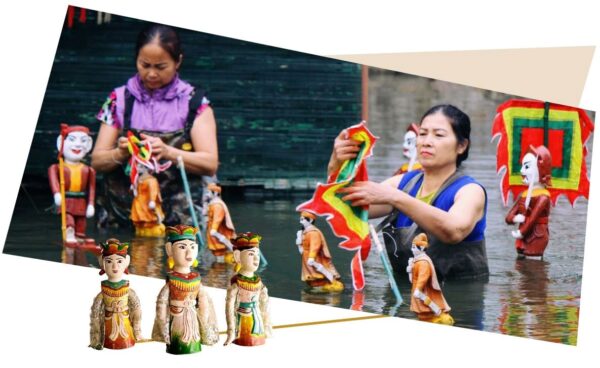
The artisans of the Dao Thuc puppetry village are preparing for a performance.
Despite being quite remote from the national highway area, Dai Ang village (Dai Ang commune, Thanh Tri district) is not immune to the “storm” of increasing construction density and the concreting of rural neighborhoods. The present-day traces of the ancient village are most visible in the collective relics of the Dai Ang communal house, temple, and pagoda, along the village’s spring festival is well-preserved. The ancient well in the village, which used to be the daily gathering place for the locals, is now preserved as a heritage to help people remember challenging times…
Mr. Nguyen Danh Phong (77 years old), the guardian of Dai Ang communal house, stated that clean water now reaches every household, and no one has to go to the well to fetch water or do laundry as before. The ancient well, located within the relic complex, has become a tourist attraction. A few years ago, during the refurbishment of the well, villagers discovered that the underground water source had dried up. To maintain the well, the villagers installed a water pump and assigned village committees to clean it regularly.
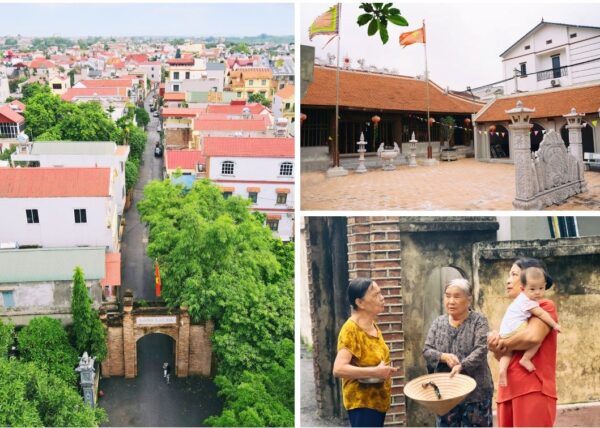
Beautiful memories of ancient architecture in the village are still recounted by the locals.
In the tales of the old village, the former homeland, many middle-aged and elderly people in the villages mention the sloping brick roads – an architectural feature considered the “specialty” of Northern rural areas.
In the past, according to village customs, before getting married, girls had to contribute bricks to the village for road construction. Red bricks, laid diagonally, became a familiar image in many rural villages and also a sign of happiness. A village with many diagonally laid brick roads indicated the prosperity and wealth of the community. Nowadays, these diagonally laid brick roads are almost nonexistent.
Recalling this trace, Mr. Nguyen Tri Tru (75 years old, Yen So village, Yen So commune, Hoai Duc district) expressed his sentiment: “We know that in modern life, we have to accept the disappearance of many old features, but despite losing many things, we still deeply regret them.”
In Hoai Duc, the architectural imprint of traditional villages in many places is gradually disappearing. Many structures exist only in the memories of the elderly in the village, as seen in villages like Lai Yen, Lai Xa, and Cat Que.
To preserve architectural structures in Hanoi’s ancient villages, the Vietnam Architects Association has implemented the project “Rural Architecture from Tradition to Modernity, linking the period of integration.” The project includes surveys and drawings of the architecture of many communal houses and ancient houses in several Hanoi villages.
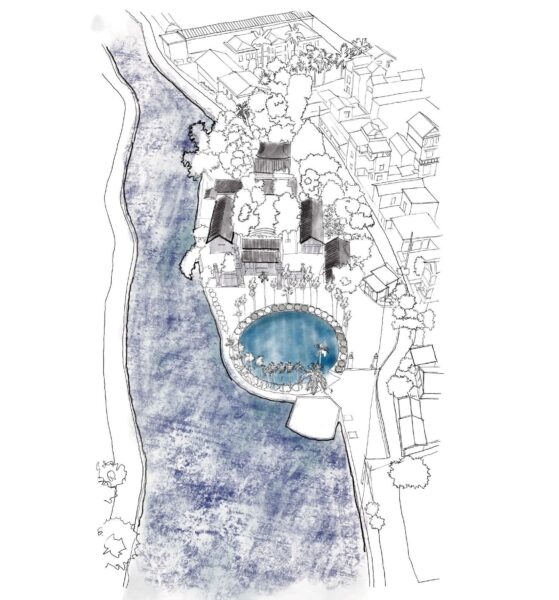
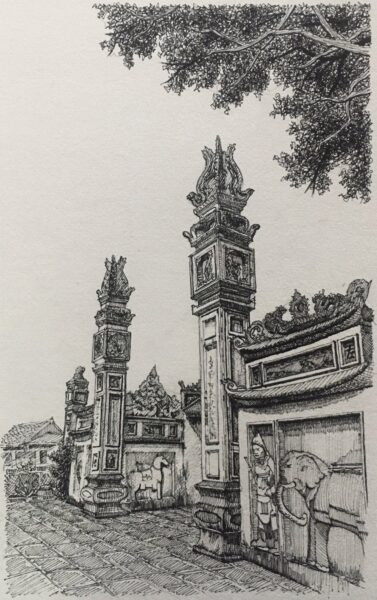
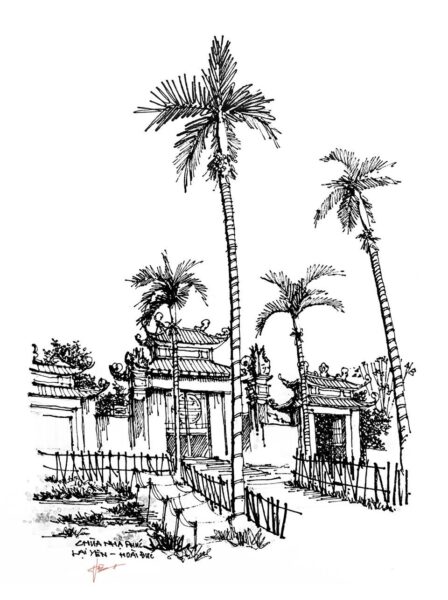
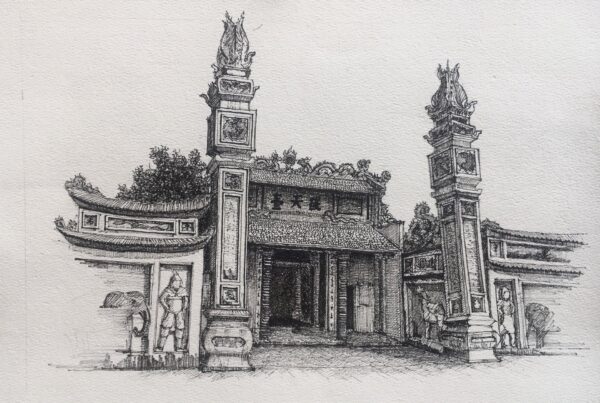
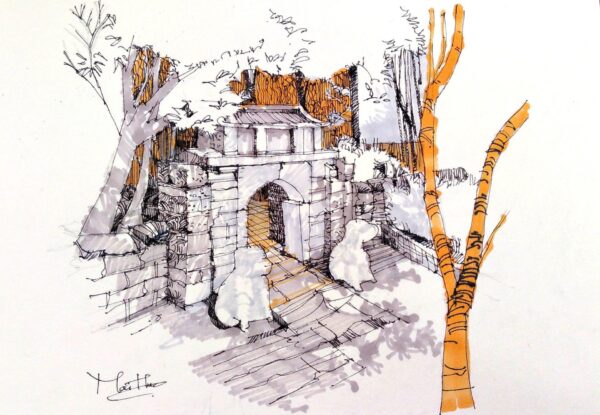
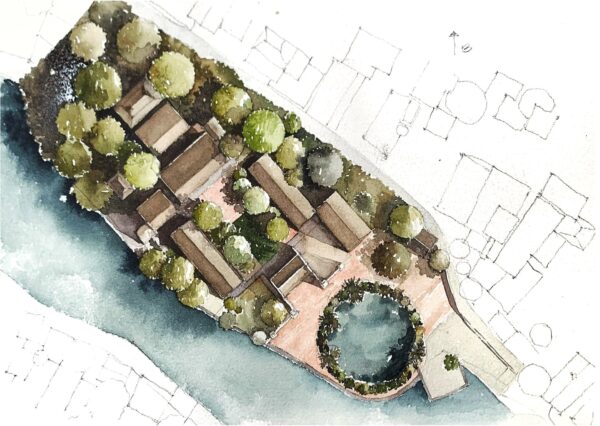
The original blueprint of the existing ancient architecture in Lai Yen village (Hoai Duc district, Hanoi) executed by the Vietnam Architects Association.

The process of urbanization and the construction of new rural areas have brought about significant changes. The infrastructure is far better than before, and people, joyous about the improved quality of life, have gradually realized that many beauties of the rural landscape, especially the scenic spaces, and architecture, have been altered and distorted beyond rescue.
Not only in the ancient villages of Dao Thuc, Dai Ang, and Yen So but most ancient villages in Hanoi are in a similar situation. It is challenging to find the distinctive identity of each rural area when living spaces are being strongly “invaded” by urban architectural styles.
In the villages, traditional wooden houses have been replaced by multi-story tube houses. From the beginning to the end of the village, tall concrete buildings with colorfully painted heat-resistant metal roofs stand tall, densely packed together, overshadowing communal houses, temples, and pagodas – the architectures that always held the highest position, located at the highest point in ancient Vietnamese villages, now seem confined.
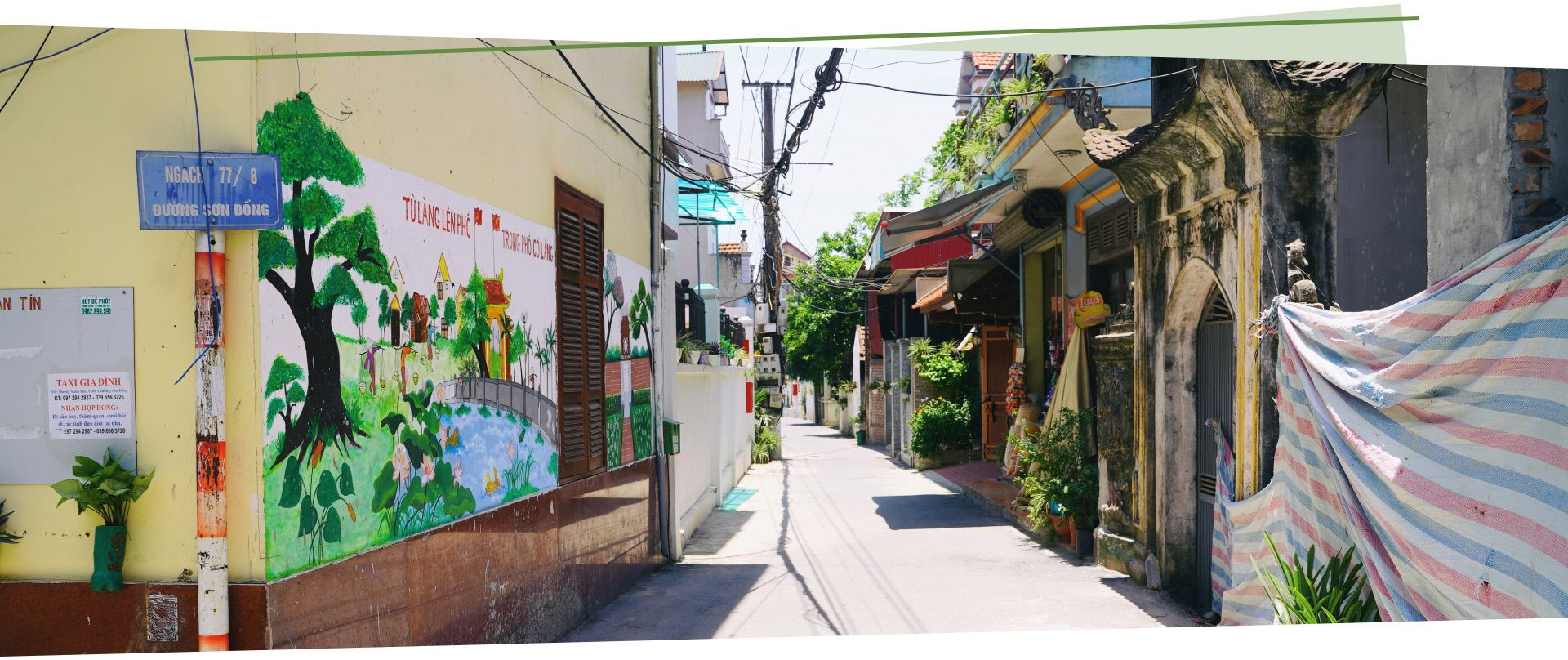
Old and new architecture intertwine in Son Dong village (Son Dong commune, Hoai Duc district, Hanoi).
The most visible marker of each Vietnamese village, the village gate, is undergoing significant impacts and changes. To facilitate the passage of cars, many places have dismantled the narrow village gates, just wide enough for a bundle of thatch or a load to pass through, and replaced them with large, imposing concrete village gates. In the allure of “expanding onto major roads,” in many villages, houses “extend” beyond the village gate, pushing the gate backward, and showing humility…
In the process of reclaiming the “identity” of rural culture, the movement to rebuild village gates and communal gates that were once demolished has surged. However, there is a lack of uniformity both in design and materials, even within the same hamlet or village, creating contrasting patches between old and new, and between the new and the new…
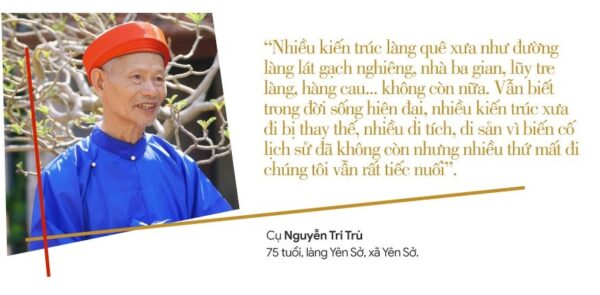
Another pressing issue is currently afflicting many rural villages: the depletion of development space. The constraints of land, the demand for progress, the limited plot of land per family, and the multiplication of household scales pose a significant challenge in maintaining ecological space under each roof, within each hamlet and village. Planning and development forecasting that cannot keep pace with the onslaught of modernization in rural areas also leave regrets.
According to architect La Hong Son, Vice Chairman of the Hanoi Urban Planning and Development Association, the expansion of the countryside in terms of architecture and construction is mainly spontaneous. The failure to adhere to heritage preservation regulations is the primary cause of the changing rural landscape and architecture. Many districts still lack comprehensive, long-term planning and direction that promotes sustainable connectivity.
Therefore, it is urgent to review and supplement the criteria for rural housing architecture, public works, heritage conservation, and ethnic and cultural characteristics suitable for each region. Localities also need to guide and promote public adherence to these architectural criteria, contributing to the proper development of rural architecture, promoting harmony with the times while preserving traditional values.
From the perspective of creating living spaces for rural residents, Dr. Bach Quoc Khang, Advisor to the Steering Committee of the Program of Science and Technology for Serving New Rural Construction, believes that no one else but the rural community is the subject, the resource, and the beneficiary of rural space.
Therefore, when outlining the details of a good living space, it must be connected and transformed into a resource for economic development, which rural people can use for their livelihoods. In other words, it is necessary to seek, restore, initiate livelihoods, develop products, and create new values based on the resources of the landscape, ecology, and culture, sufficiently attractive for the community to participate in a good living space. That is the foundation of building a sustainable new rural area.
Tran Hong Van, Hoang Le Quyen, Doan Anh Tuan, and Nguyen Huu Tiep
Bài 1: Làng trong “cơn lốc” đô thị hóa (hanoimoi.vn)

